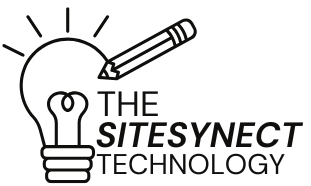Best Practices for Financial Reporting Using SaaS
Discover how SaaS tools revolutionize financial reporting in 2024. Learn best practices to automate workflows, ensure compliance, and deliver actionable insights faster.

Introduction
Financial reporting is the backbone of business decisions—but manual processes, outdated spreadsheets, and fragmented data often lead to errors, delays, and compliance risks. In 2024, SaaS (Software-as-a-Service) tools are rewriting the rules with AI-driven automation, real-time dashboards, and foolproof audit trails. Whether you’re a startup CFO or a finance team leader, here’s how to harness SaaS for flawless financial reporting.
Why SaaS Tools Are Essential for Modern Financial Reporting
-
Automation: Eliminate manual data entry and reconciliation.
-
Real-Time Insights: Track cash flow, revenue, and expenses instantly.
-
Scalability: Handle multi-currency, multi-entity reporting effortlessly.
-
Compliance: Stay audit-ready with automated GAAP/IFRS updates.
Stat Alert: Companies using SaaS for financial reporting reduce closing cycles by 35% (Gartner, 2023).
7 Best Practices for Financial Reporting with SaaS
1. Automate Data Aggregation
-
Tools like QuickBooks Online and Xero sync bank feeds, invoices, and receipts automatically.
-
Pro Tip: Use Zapier to connect SaaS tools (e.g., Salesforce → QuickBooks) and auto-update ledgers.
2. Standardize Reporting Templates
-
Create reusable templates for balance sheets, P&L statements, and cash flow reports.
-
Tools:
-
Plex ERP: Pre-built templates for manufacturing and retail.
-
Sage Intacct: Customizable dashboards for nonprofits and enterprises.
-
3. Leverage AI-Driven Analytics
-
Platforms like Workday Adaptive Planning use machine learning to:
-
Detect anomalies (e.g., sudden expense spikes).
-
Predict cash flow gaps and revenue trends.
-
-
Example: A SaaS startup reduced forecasting errors by 50% using AI insights.
4. Ensure Real-Time Collaboration
-
Share live reports with stakeholders via Google Workspace or Microsoft 365 integrations.
-
Use commenting features in tools like FreshBooks to resolve discrepancies instantly.
5. Prioritize Data Security & Compliance
-
Choose SaaS tools with:
-
SOC 2 or ISO 27001 certifications.
-
Role-based access controls (e.g., NetSuite).
-
Audit trails to track changes (e.g., BlackLine).
-
6. Schedule Regular Audits
-
Automate audit prep with tools like AuditBoard or Vena Solutions.
-
Checklist:
-
Reconcile accounts monthly.
-
Validate tax calculations (e.g., VAT, GST).
-
7. Train Your Team
-
Host workshops to master SaaS features (e.g., multi-currency reporting in Zoho Books).
-
Use Loom to create short video guides for recurring tasks.
Top SaaS Tools for Financial Reporting in 2024
-
QuickBooks Online Advanced:
-
AI-powered cash flow forecasting and custom reporting.
-
-
Workday Adaptive Planning:
-
Predictive analytics and scenario modeling for enterprises.
-
-
Sage Intacct:
-
Multi-entity consolidation and real-time dashboards.
-
-
Fathom:
-
Benchmarking and KPI tracking for SMBs.
-
-
Vena Solutions:
-
Excel-integrated planning and reporting.
-
Trends Shaping SaaS Financial Reporting
-
Generative AI for Narrative Reporting: Tools like ChatGPT-4 auto-draft executive summaries.
-
Blockchain for Audit Trails: Platforms like Trullion use blockchain to validate transactions.
-
ESG Reporting Integration: Track carbon footprints and DEI metrics alongside finances (e.g., Workiva).
Pitfalls to Avoid
-
Over-Customization: Complex reports can confuse stakeholders—keep them simple.
-
Ignoring Mobile Access: 60% of finance teams review reports on phones—optimize for mobile.
-
Data Silos: Ensure SaaS tools integrate with ERP, CRM, and payroll systems.
Case Study: How a Retail Chain Slashed Month-End Close Time
A 100-store retailer migrated from spreadsheets to Sage Intacct, automating inventory reconciliation and multi-location reporting. Result: Month-end close time dropped from 15 days to 5.
Future of Financial Reporting (2025 and Beyond)
-
AI Auditors: Autonomous systems like MindBridge will flag fraud risks in real time.
-
Voice-Activated Queries: “Alexa, show Q3 gross margin trends.”
-
Global Compliance AI: Auto-adjust reports for regional tax law changes.
Conclusion
SaaS tools aren’t just digitizing financial reporting—they’re redefining it. By automating workflows, leveraging AI, and prioritizing security, businesses can deliver accurate, actionable reports faster than ever. Ready to upgrade? Start with a free trial of QuickBooks Online or Fathom and transform your finance game today.
What's Your Reaction?
 Like
0
Like
0
 Dislike
0
Dislike
0
 Love
0
Love
0
 Funny
0
Funny
0
 Angry
0
Angry
0
 Sad
0
Sad
0
 Wow
0
Wow
0





































